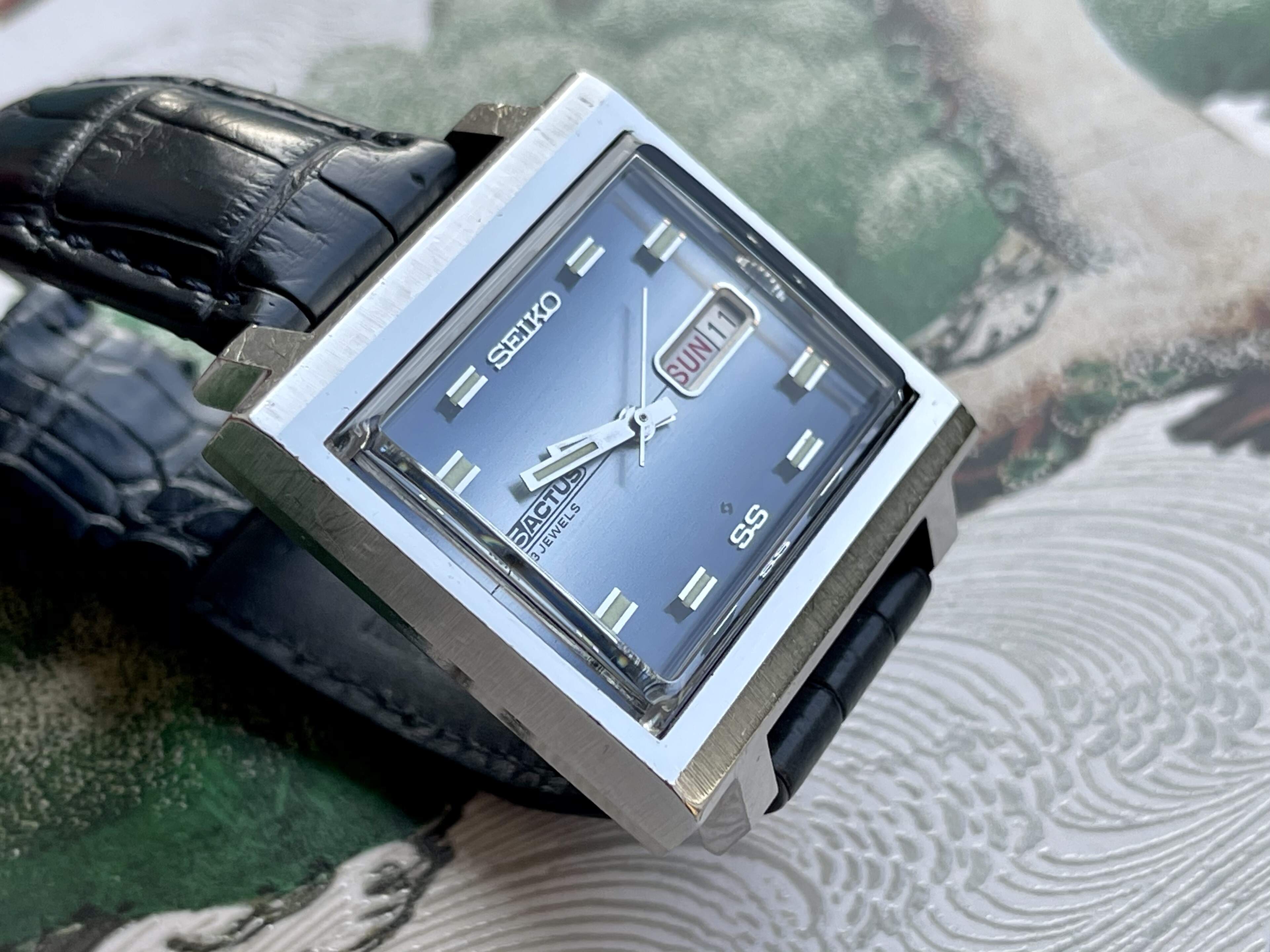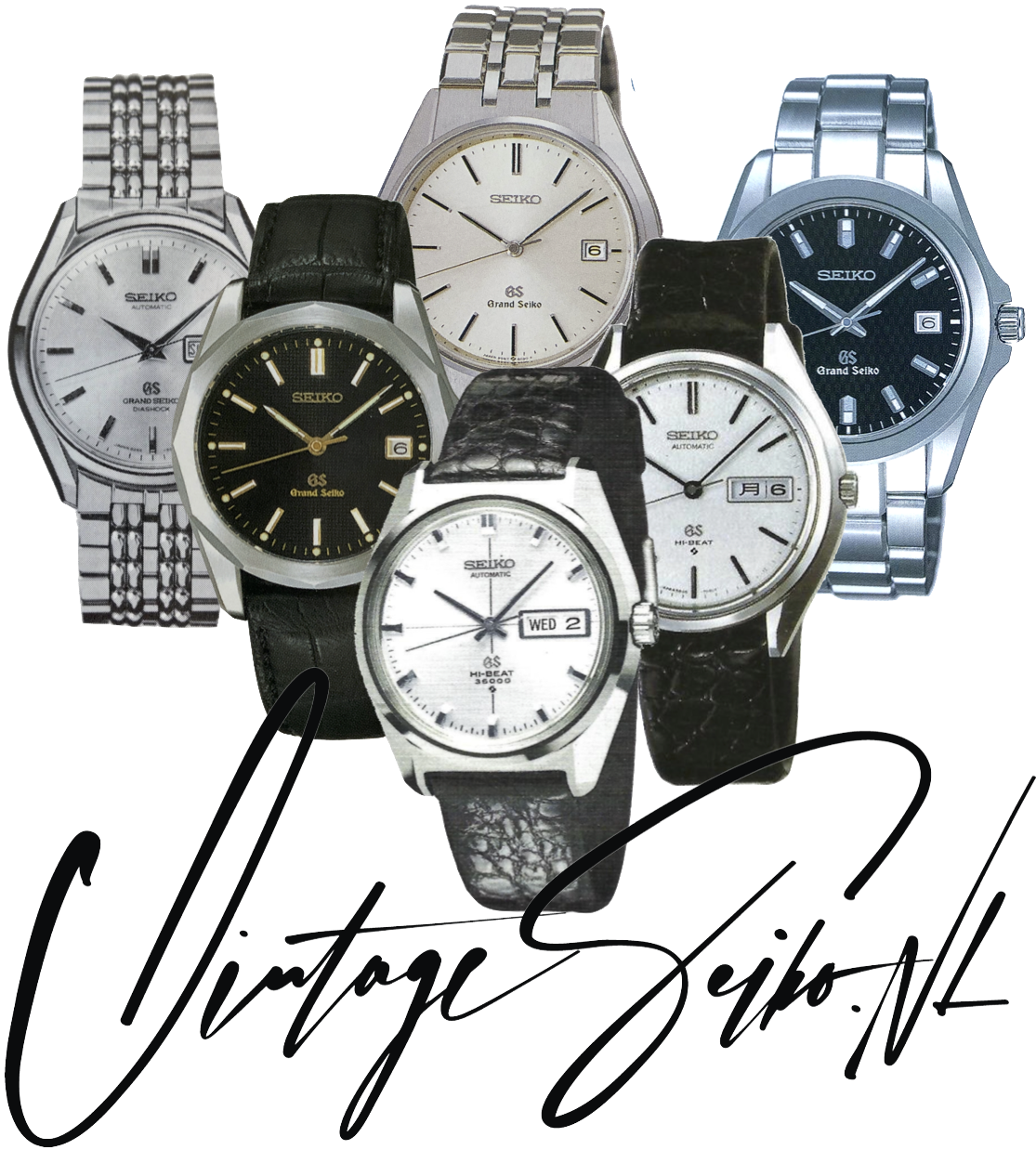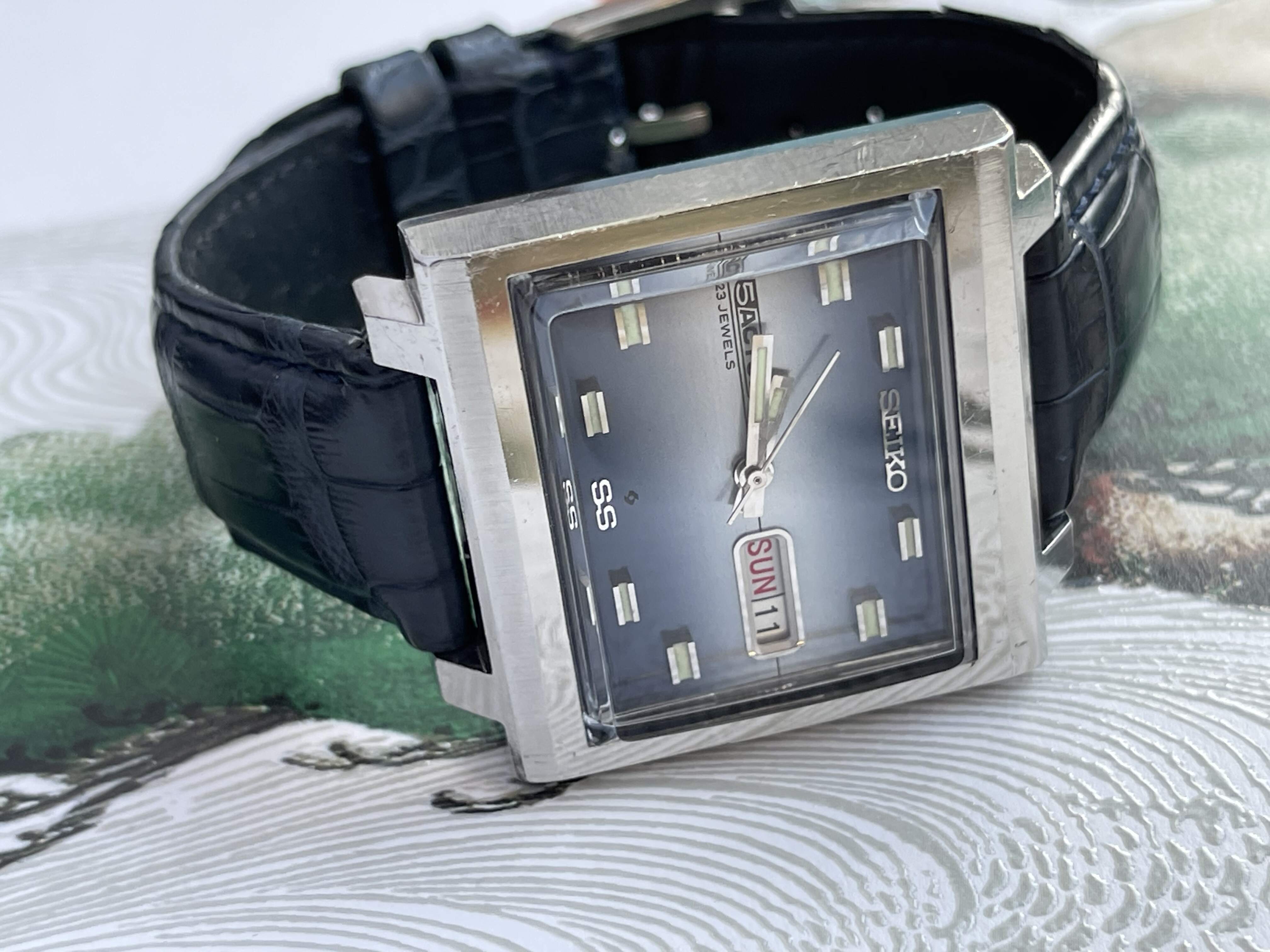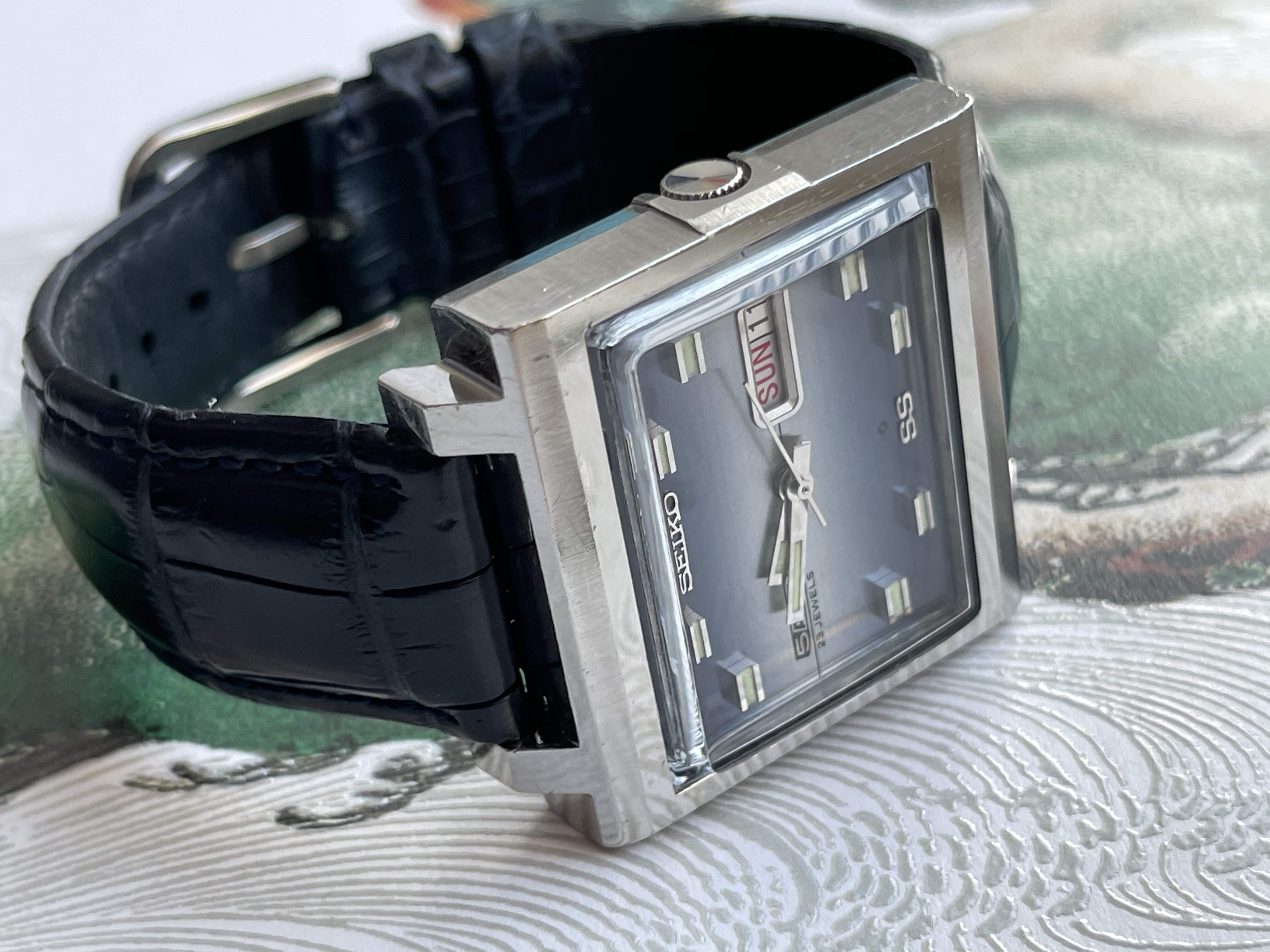
Seiko 5 Actus 6106-5440 (Sold)
€ 405.00
Sold out
| About | Details | and then some |
|---|---|---|
| Manufacture | Seiko | 5 Actus |
| Model reference | 61-5A 557 |
6106 |
| Movement | Automatic | 21600 |
| Caliber | 6106 | 5440 |
| Dial | Blue Gradient |
|
| Case | 35x38x11mm | Steel |
| Lugs | 18mm | |
| Bracelet | Leather | Not this croc |
| Crystal serial # | REOW02AN | Acrylic |
| Timegrapher | Accuracy:tbe | |
| Jewels | 23 | |
| Serial # | 20xxxx | Production: 1972-10 |
| Condition | Excellent | |
| Service | Full service | |
| Box & Papers | No box | No papers |
6106 5Actus
The Seiko 6106 5Actus was a product line launched in the '60s and continued in the '70s, it consisted of both Seiko 5 Actus and the regular Actus - with an emphasis on styling. This particular innovative design was targeted at the baby boomers of that time but remains in demand with vintage watch collectors right up to the current day and age. It is after all about the very first Helmet design, which would be reiterated in the 6139 helmets or about the first UFO style 5Actus 8410, which would be applied to the 6138 UFO. The dial of that UFO features just the hour markers, Seiko did this occasionally, but not to the other light grey 8410 variant. To me, looking at, it signifies a nice break from tradition.
So the 5Actus seems to come in both rather conventional and "mod" designs, but the "mod" Actus was not as radical as the Advan and Vanac mod styles. The 5Actus shown below however could be considered radical design for the reason stated above, not only that but also for being waterproof (a big deal in those days). For the young it stated in the adds "go anywhere, do anything!"
This hip(ster) product line used 6106 and 7019 movements - there may be others, but these two are the most common. Both were reliable automatic movements. The only real difference between the two movements is that the 6106 used two screws to hold the winding rotor in place. Date languages used were English/Japanese only. Strangely enough then the Latin word Actus used for this watch, meaning a unit of length, progress, moving through, series/sequence, act, performance (of play), delivery, action, or deed...
The 23 jewel 6106 hackable but no manual wind (!) movement was introduced in 1967 with its first iteration, the Kanji only day date 6106A with sweeping seconds and a power reserve of 46h. It was revised twice in the next two years adding a day quickset, the 6106B appearing in 1968 and the 6106C in 1969. The 6106C only has the dual language day wheel, Kanji and English. All three however have the quickset feature to set the day and date by pushing the crown in by two discrete steps (first push date, second harder push day). It is of course very practical to not have a big crown if pushing and time adjustments are the only things you will ever do.
The finishing on the 5ASctus usually is exceptional for a number of reasons. First of all, apart from the uniquely avant garde case design, the dial is so well spaced out that the bezeled day/date window is somehow hardly obtrusive. This may be to the relief of the firm resistance some have when it comes to watches with these indicators paired. Finally, on the versions with applied indices, the chunky highlighted hands look sporty but classy at the same time.
Writing? There’s not that much and the little that’s there is purposeful and well distributed. The label “SS,” for instance means Second Stop and indicates the hacking feature. Some call it the “Seiko Spirit.” When pulling the crown to set the hands, all time automatically stops.
7019 5Actus
The "other" 5Actus caliber is the real workhorse 21 jewel 7019, beating at 216000bph with 43 hours of power reserve. It is not a hacking movement and developed on its own trajectory.
The 7000 series was a family of mid-range mechanical watch movements from Seiko from the 1970's through the 1990's. Produced from 1973, the 7000 family was a midrange mechanical offering. It was the basis for the popular 7S26 family, and its descendants remain in production today. The family operated at the same 21,600 A/h still used by midrange Seiko mechanisms and all offered 43 hours of power reserve. All members of the family feature Seiko's bi-directional Magic Lever winding system.
There were three versions of the 7000 family before the introduction of the 7S26 with its new quickset day and date mechanism and other improvements:
1.The original 7005/7006/7025 movements appeared in the early 1970's; had quickset date but not day
2.The line expanded to include cam switching modular chronographs with the 7015/7016/7017/7018; quickset day by pushing the crown, the non-chrono 7019 however was also included
3.The line was resurrected in the 1980's as the 7001/7002/7009/7039, with the 7019 still being in production.
The 7005 and 7006 (date only and day/date respectively) designs were re-used and updated in the 1980's as the 7002 and 7009. These later movements were optimized for price and mechanized production, using many more stamped steel and plastic parts. Although they have proven fairly robust, their accuracy has suffered due to this change.





